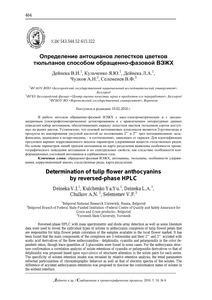Renewing agricultural grasslands for improved yields and forage quality generally involves eliminating standing vegetation with herbicides, ploughing and reseeding. However, grassland renewal may negatively affect soil quality and related ecosystem services. On clay soil in the north of the Netherlands, we measured grass productivity and soil chemical parameters of ‘young’ (5–15 years since last grassland renewal) and ‘old’ (>20 years since last grassland renewal) permanent grasslands, located as pairs at 10 different dairy farms. We found no significant difference with old permanent grassland in herbage dry matter yield and fertilizer nitrogen (N) response, whereas herbage N yield was lower in young permanent grassland. Moreover, the young grassland soil contained less soil organic matter (SOM), soil organic carbon (C) and soil organic N compared to the old grassland soil. Grass productivity was positively correlated with SOM and related parameters such as soil organic C, soil organic N and potentially mineralizable N. We conclude that on clay soils with 70% desirable grasses (i.e., Lolium perenne and Phleum pratense) or more, the presumed yield benefit of grassland renewal is offset by a loss of soil quality (SOM and N-total). The current practice of renewing grassland after 10 years without considering the botanical composition, is counter-productive and not sustainable.
MULTIFILE

Reversed-phase HPLC with mass spectrometric and diode array detection as well as some literature data were used to reveal the individual types of solutes in anthocyanin complexes of tulip flower petals that are responsible for tulip flower petals coloration of the samples available in the local flower market. It has been found that the main components of the complexes are 3-rutinosides and their 2”’ and 3”’ acylated with acetic acid derivatives of the three anthocyanidins - delphinidin, cyanidin and pelargonidin in the color dependent ratios, though trace quantities of 3-glucosides were found in some cases. For the anthocyanin structure confirmation a correlation analysis of solute retentions of cyanidin or pelargonidin derivatives vs that of delphinidin was proposed based upon equivalence of structures alteration in the solute pairs for each series. The specificity of solutes retention modes was revealed by relative retention analysis, the trend parameters reflected particularities of chromatographic behavior as well as that of electron spectra of the solutes. The difference of acylated anthocyanins retentions was proposed to disclose the conformation states of solutes in the sorbent interface.

For the recycling of carpet and artificial turf the latex backing is often a real stumble block. Many strategies have been developed like freezing the carpet, followed by grinding and subsequent separation of the milled particles. Once it has been separated from its backing materials, PA 6 is relatively easy to depolymerise. This produces fresh caprolactam that can be used to manufacture PA 6 with no loss in quality, and is suitable for further recycling [1]. The comparable process for PA 6,6 is not as easy, but DuPont and Polyamid 2000 have developed and patented a process that depolymerises any mixture of PA 6 and 6,6 using ammonia. The result is fresh caprolactam and 1,6 diaminohexane for manufacture of PA 6 and 6,6 respectively [2]. Obviously a lot of research has been devoted to avoiding latex as a backing like e.g. polyurethane carpet backing systems based on natural oil polyols and polymer polyols [4]. Still carboxylated styrene butadiene is the leading synthetic latex polymer used in EU-27 for carpet backing, followed by styrene-acrylics and pure acrylics. This contrasts with Eastern Europe, Russia, and Turkey where styrene-acrylics dominate, followed by PVAc and redispersible powders [3]. In addition there has been a lot of research into developing alternative backing systems where the backing can easily be removed. Examples are the use of gecko technology [5] or using click chemistry (reversible Diels Alder reactions) [6]. But the best option for recycling is of course to develop carpets based completely on monomaterials. Paper for the 14th Autex World Textile Conference May 26th-28th 2014, Bursa, Turkey.
MULTIFILE
